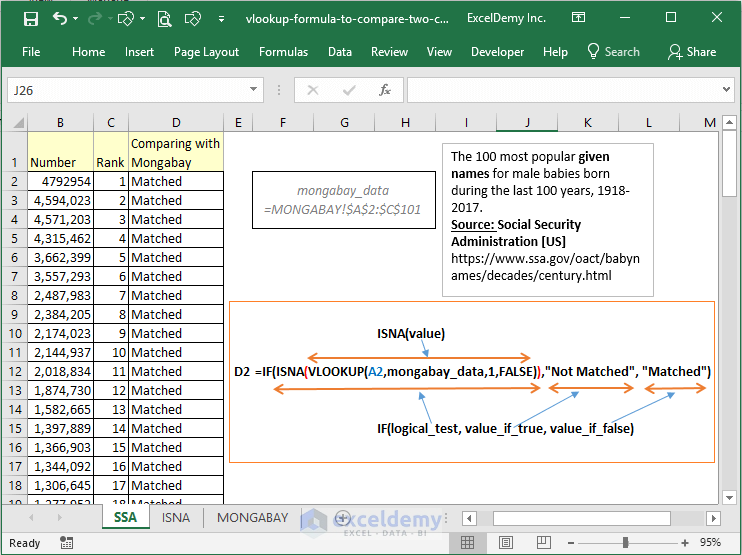
- EXCEL COMPARE TWO COLUMNS FOR DUPLICATES MAC HOW TO
- EXCEL COMPARE TWO COLUMNS FOR DUPLICATES MAC CODE
When values run out from List1 formula1 returns errors, the IFERROR function then moves to formula2. Please refer to the following two posts if you need to find the duplicates in one or multiple columns. The following is the method to find and remove duplicates in two columns. To identify and remove duplicates is crucial in your data cleaning and analysis.

This makes sure that duplicates are ignored.ĬOUNTIF("Duplicates",)Īnd returns Wawrinka, Stanislas in cell F3. When working with a large database, you may find many duplicates in one column or multiple columns. The COUNTIF function counts values based on a condition, in this case, I am counting values in cells above. IFERROR( formula1, formula2) Step 1 - Prevent duplicate values This formula consists of two similar parts, one returns values from List1 and the other returns values from List2. Search values and return value with highest levelĮxtract unique distinct records from two data setsįilter unique distinct records using criteria

We would love to hear from you, do let us know how we can improve, complement or innovate our work and make it better for you.Count cells based on background color programmaticallyĬreate a list of duplicates where adjacent cell value meets a conditionĭistribute values across numerical ranges And also you can follow us on Twitter and Facebook. If you liked our blogs, share it with your friends on Facebook.
EXCEL COMPARE TWO COLUMNS FOR DUPLICATES MAC CODE
In case we have similar requirement but the number of columns are more than two then we need to tweak the code in order to get the result. Similarly, we will run For Each Loop for column B & extract the unique values in column DĬonclusion: We can get the unique list of text or values from each of the column the header name of the column C (Results - Exists in List 1 but not in List 2) & column D (Results - Exists in List 2 but not in List 1).If WorksheetFunction.CountIf(Range("B2:B40"), rngCell) = 0 Then this line of code is using COUNTIF VBA function to check criteria range B2:B40 with criteria rngCell is equal to zero, then in column C, the value stored in rngCell will be saved.For Each rngCell In Range("A2:A40") we will check for each cell in “rngCell” with a condition.We declare Dim rngCell As Range the purpose of declaring rngCell As Range is we want to assign the sample range “A2:A40” with a specific name i.e.In the above code, we will use IF function along with For loop to get the result. The unique list from columns A & B will be generated automatically in columns C & D.The above macro is all set to run either we can press F5 key –if you are currently in Visual Basic Editor Screen –or we can use shortcut keys “ALT + F8”, select your macro & click on run button.Range("D" & Rows.Count).End(xlUp).Offset(1) = rngCell If WorksheetFunction.CountIf(Range("A2:A40"), rngCell) = 0 Then Range("C" & Rows.Count).End(xlUp).Offset(1) = rngCell If WorksheetFunction.CountIf(Range("B2:B40"), rngCell) = 0 Then Copy the below code in the standard module.


To compare the list of two columns, we need to follow the below steps to launch VB editor: In this example, I am taking only 40 rows of sample data. I want a macro to check more than 40 k rows of data in both of the columns & then extract the list of unique entries from each of the column into the next column i.e. In the example shown, the formula used to highlight duplicate values is: AND(COUNTIF( range1, B5 ),COUNTIF( range2, B5 )) Both ranges were selected at the same when the rule was created. Question: There are multiple values which exist in columns A & B. To highlight duplicate values in two or more columns, you can use conditional formatting with on a formula based on the COUNTIF and AND functions. We will use VBA code to compare two columns of data & show the difference in next two columns.
EXCEL COMPARE TWO COLUMNS FOR DUPLICATES MAC HOW TO
In case you are wondering how to compare 2 columns of data having rows in millions & extract the unique values among both the columns then you should read this article.


 0 kommentar(er)
0 kommentar(er)
